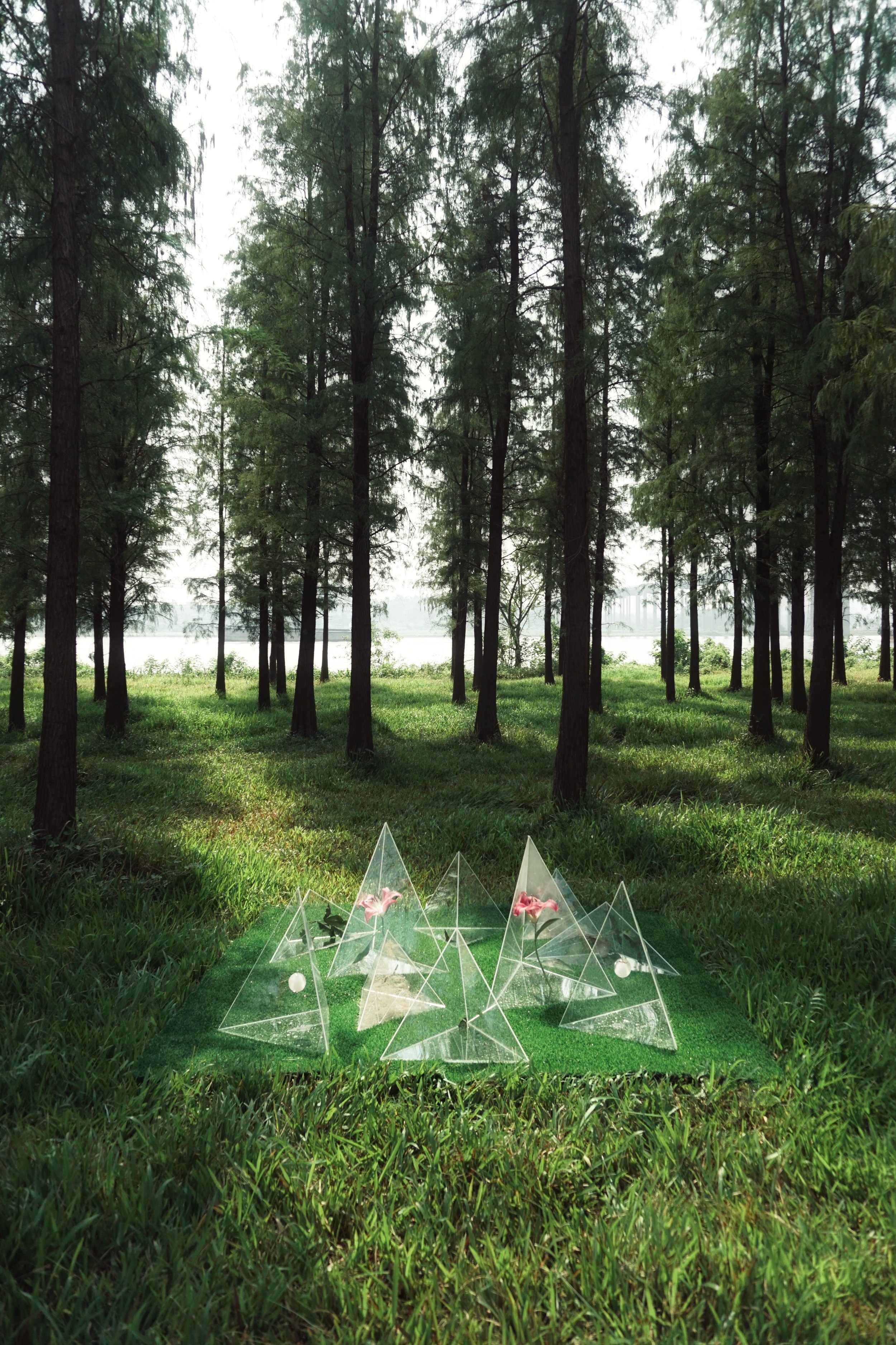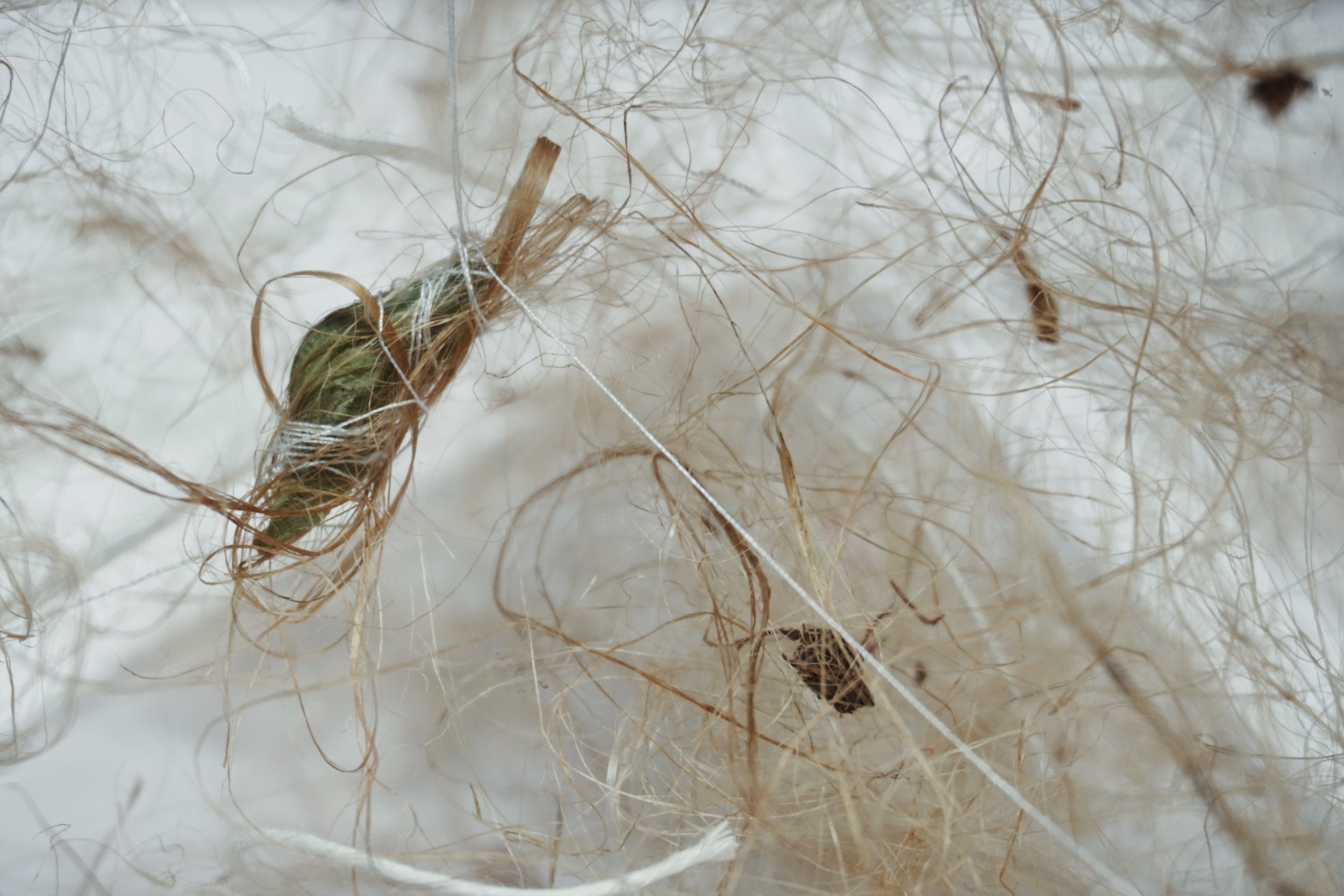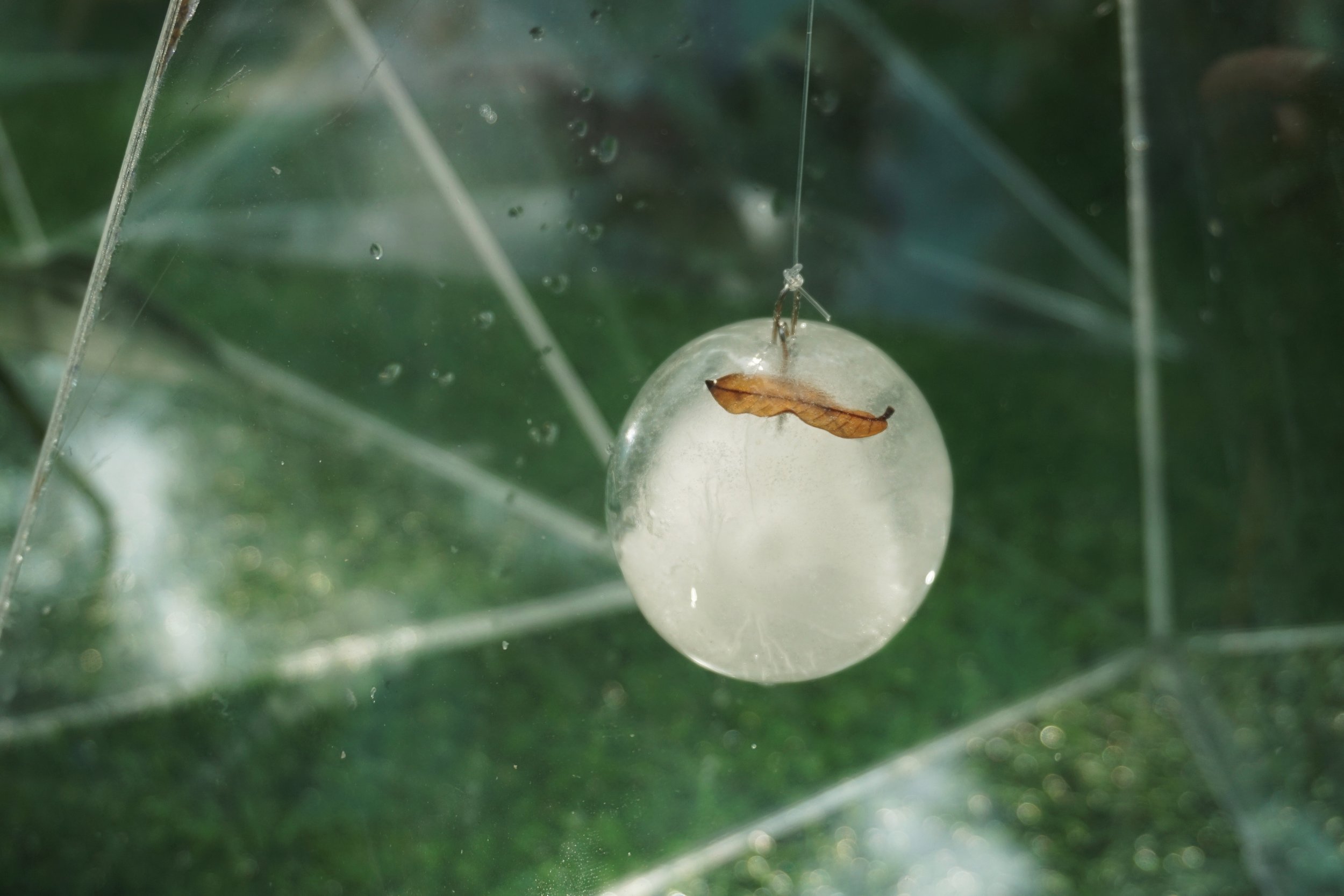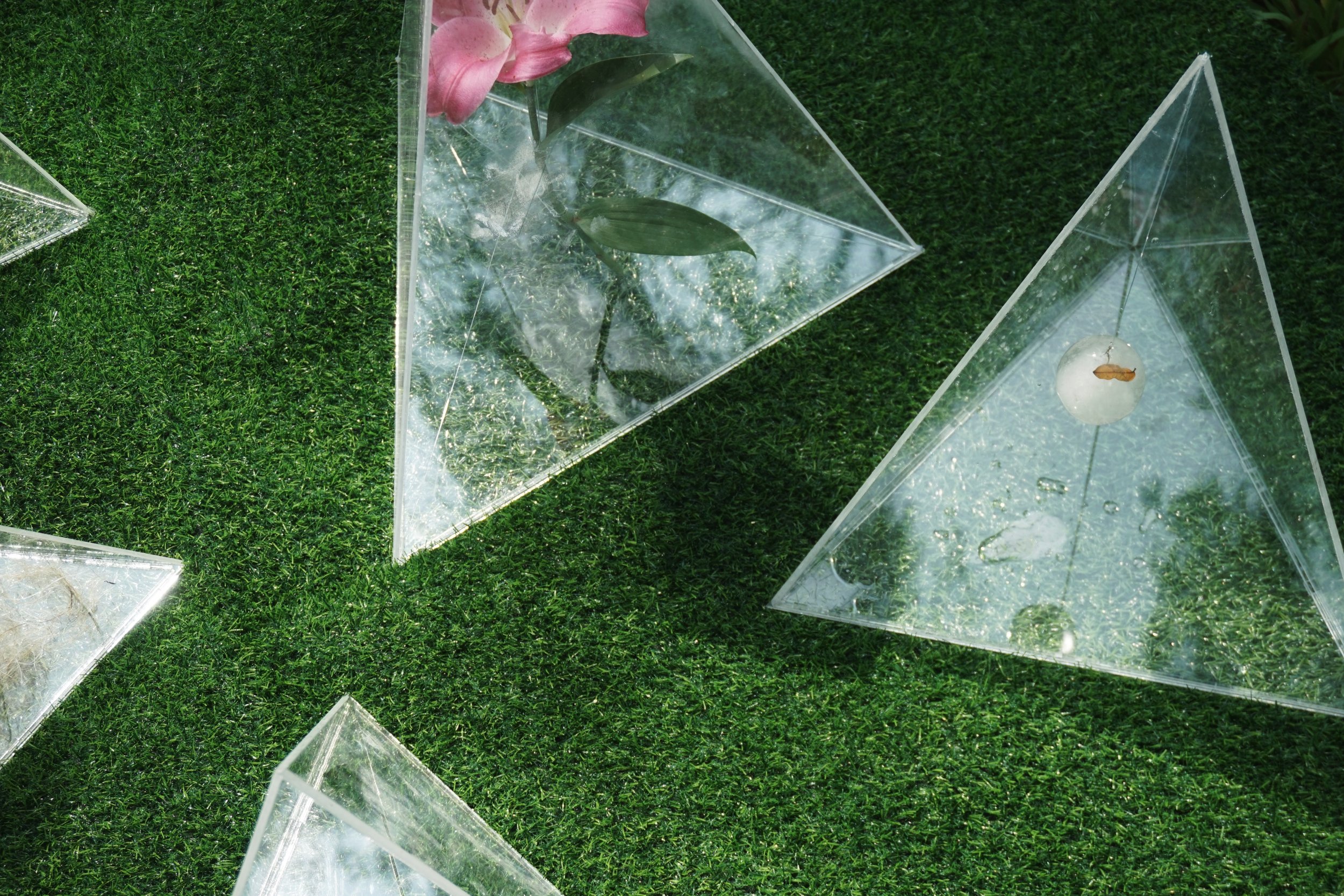
Butterfly series
2019
On March 4, 2019, I stumbled upon a black butterfly trapped in the translucent shade of an overpass. It was flying as high as it could toward the light, but it was not an exit. The exit was on either side of the roof, not far away. During the ten minutes of observation, the butterfly continiued to flutter towards what it through was right until it had no strength. So I strated to think if this was just a random act of the butterfly, or it was the right direction that butterflies generally believed. If the correct judgement driven by nature is put aside, can butterflies change their direction? Or maybe when they are tried of flying and stop to rest, they will occasionally approach the real exit.
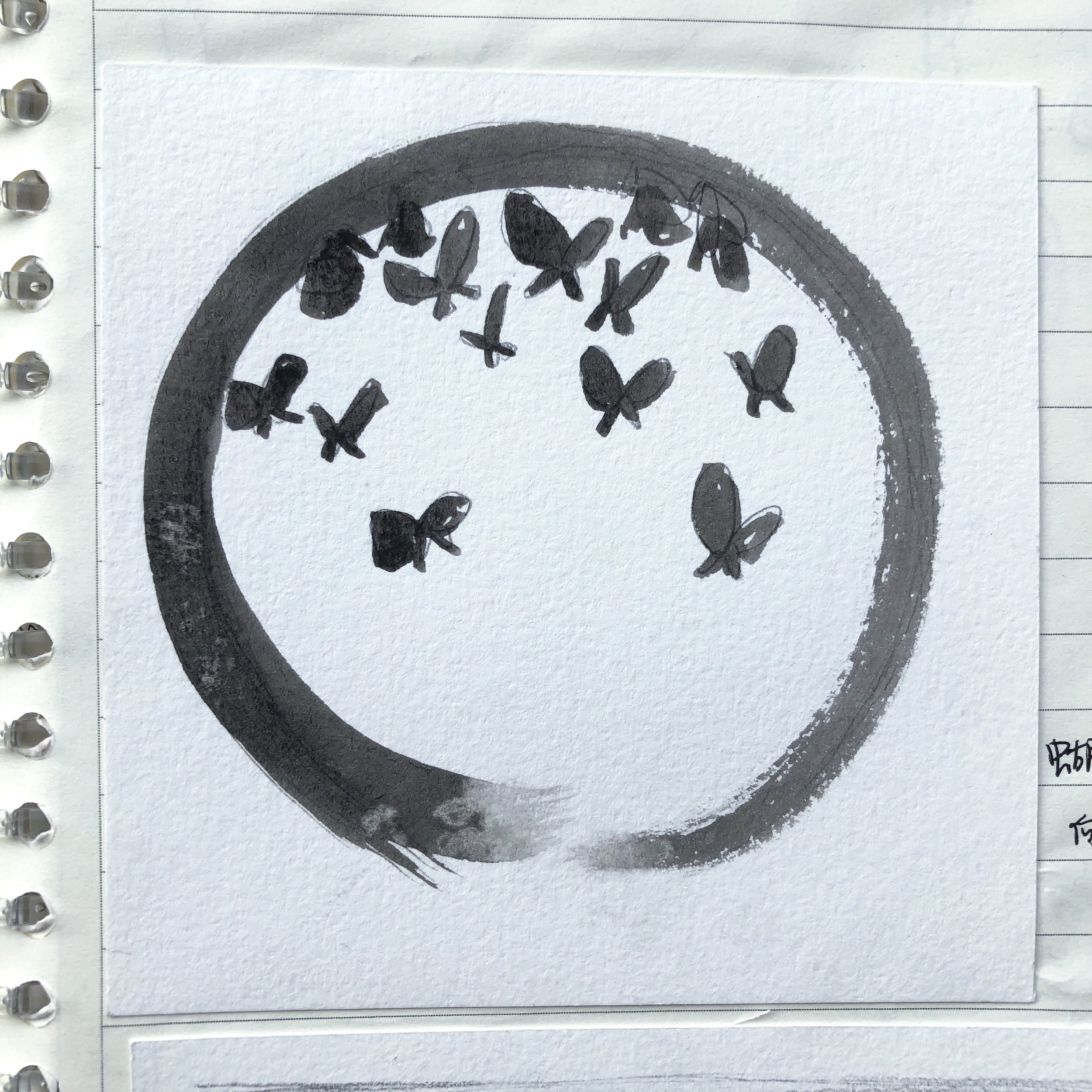
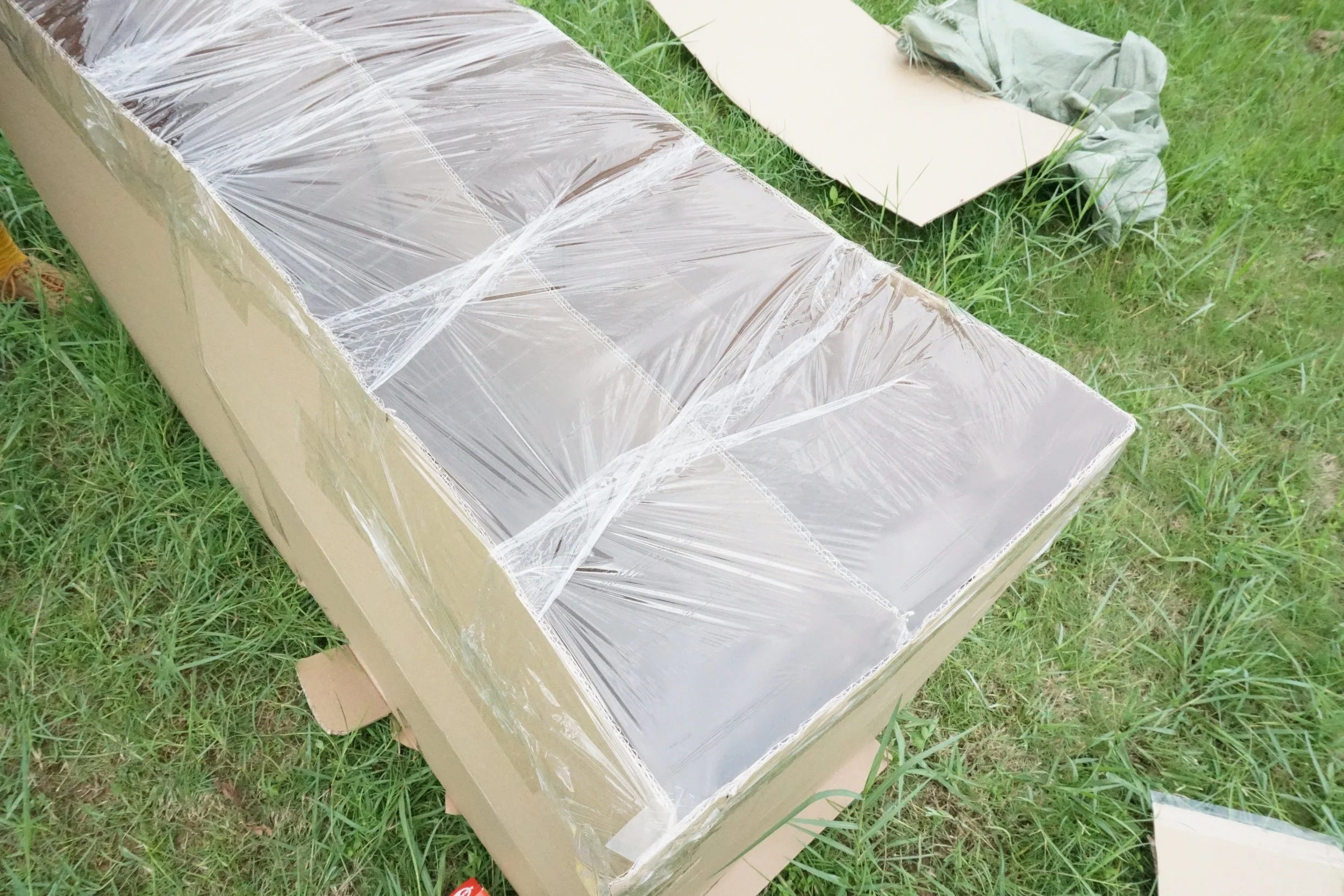
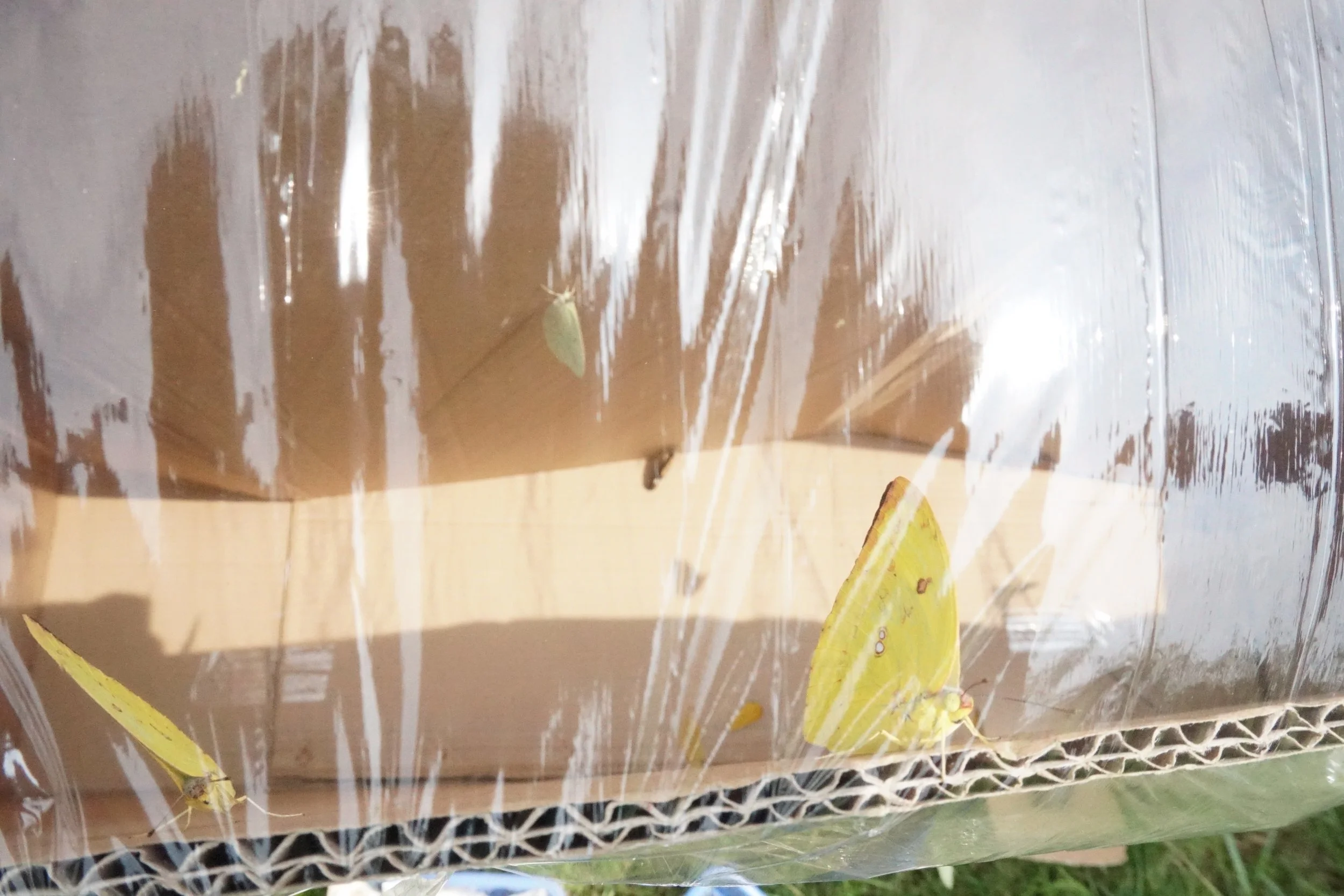
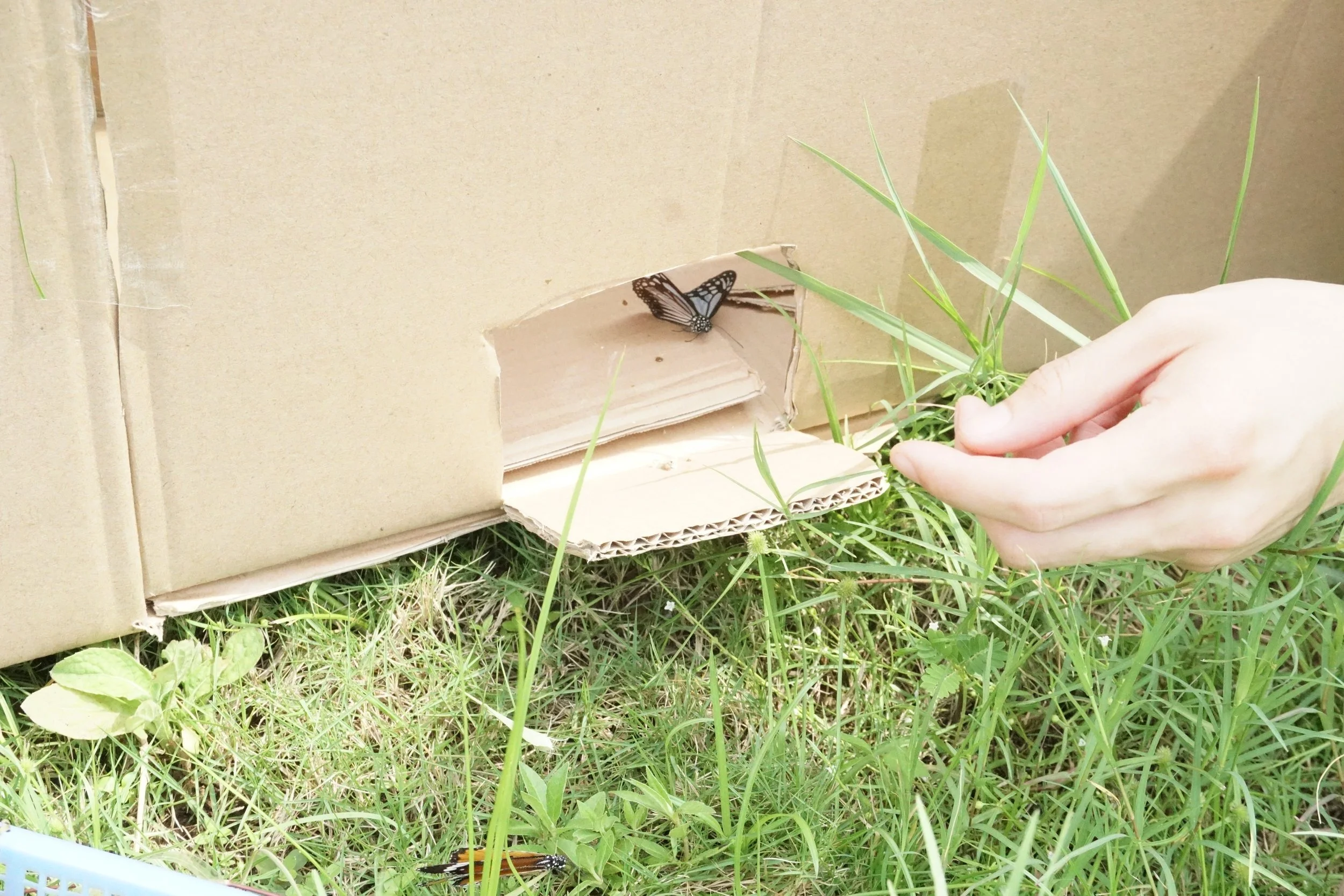
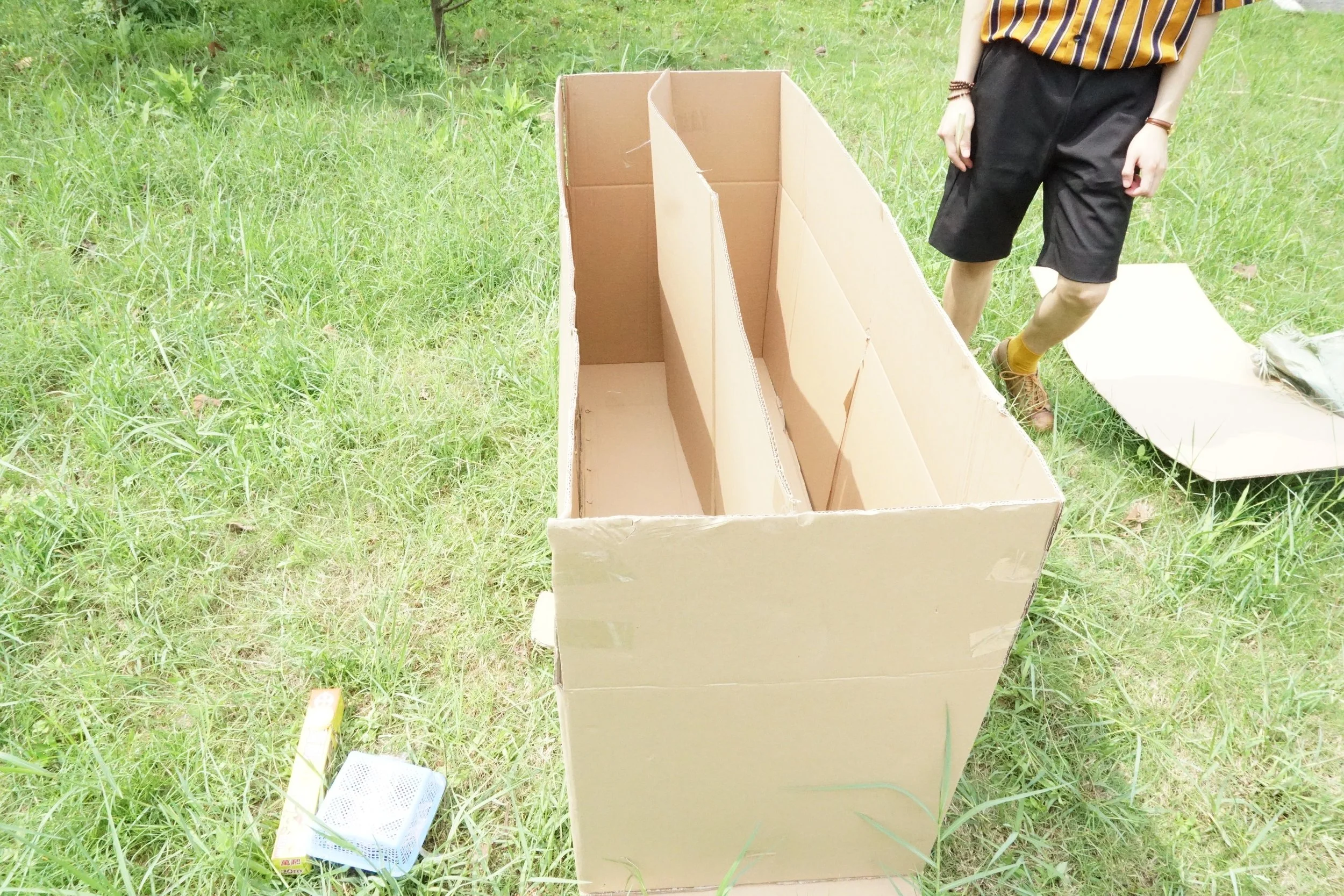
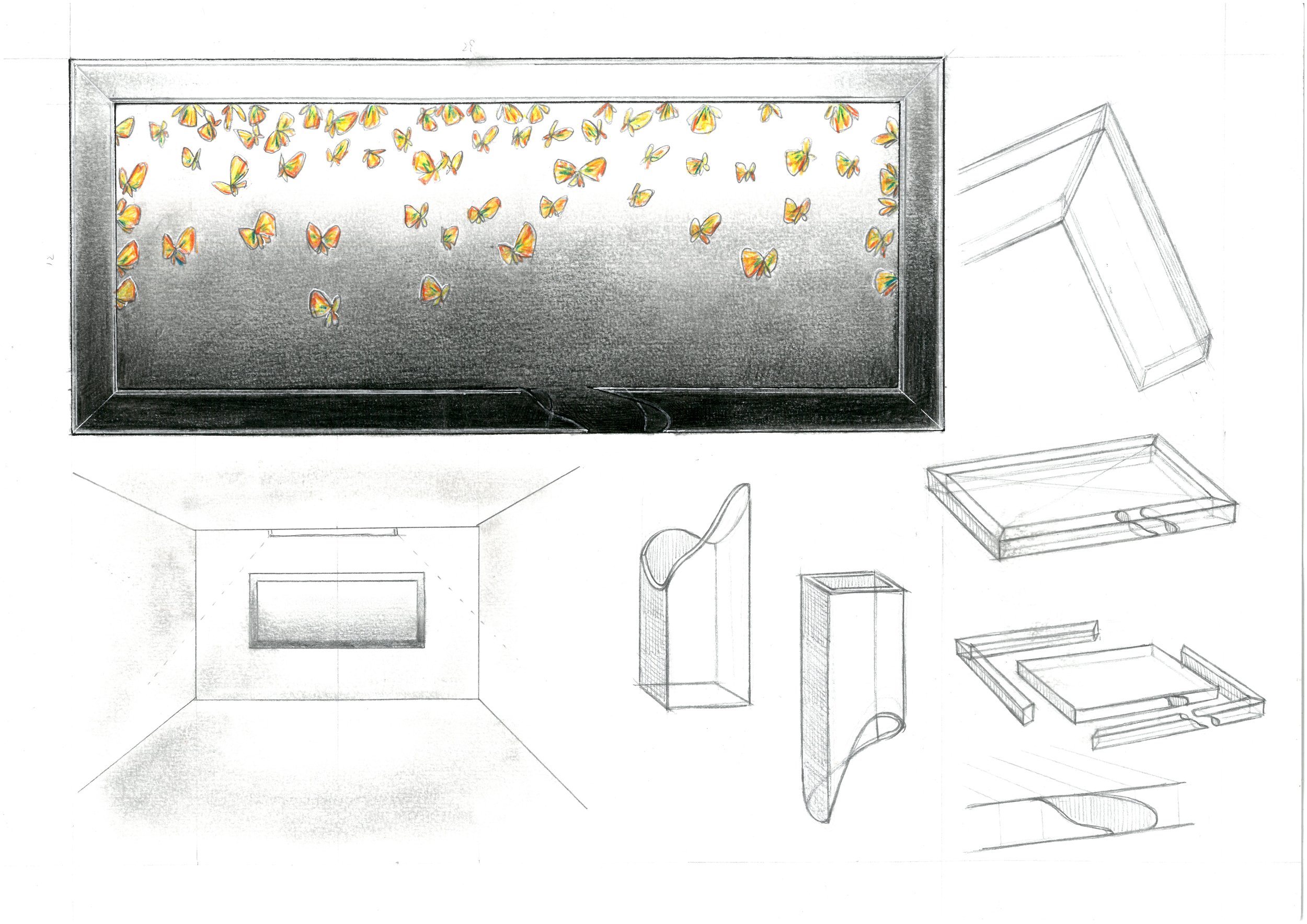
Exit, Acrylic plastic, light, butterflies, 140 × 60 ×15cm, 2019
The device was designed as a flat rectangle, and the behavior of the butterfly can be observed from the shade and light. The device appears as a frame that can be hung on the wall, allowing the viewer to return the way of viewing the painting to observe the direction of the butterfly. The light source is set on the top to simulate the sun rays, and the outlet is set at the bottom.
Observation time: 20 min
Result: Of the 25 butterflies, 18 with high activity kept flying near the top of the plastic wrap, those with low activity rested at the bottom of the carton, and two butterflies found their way out.
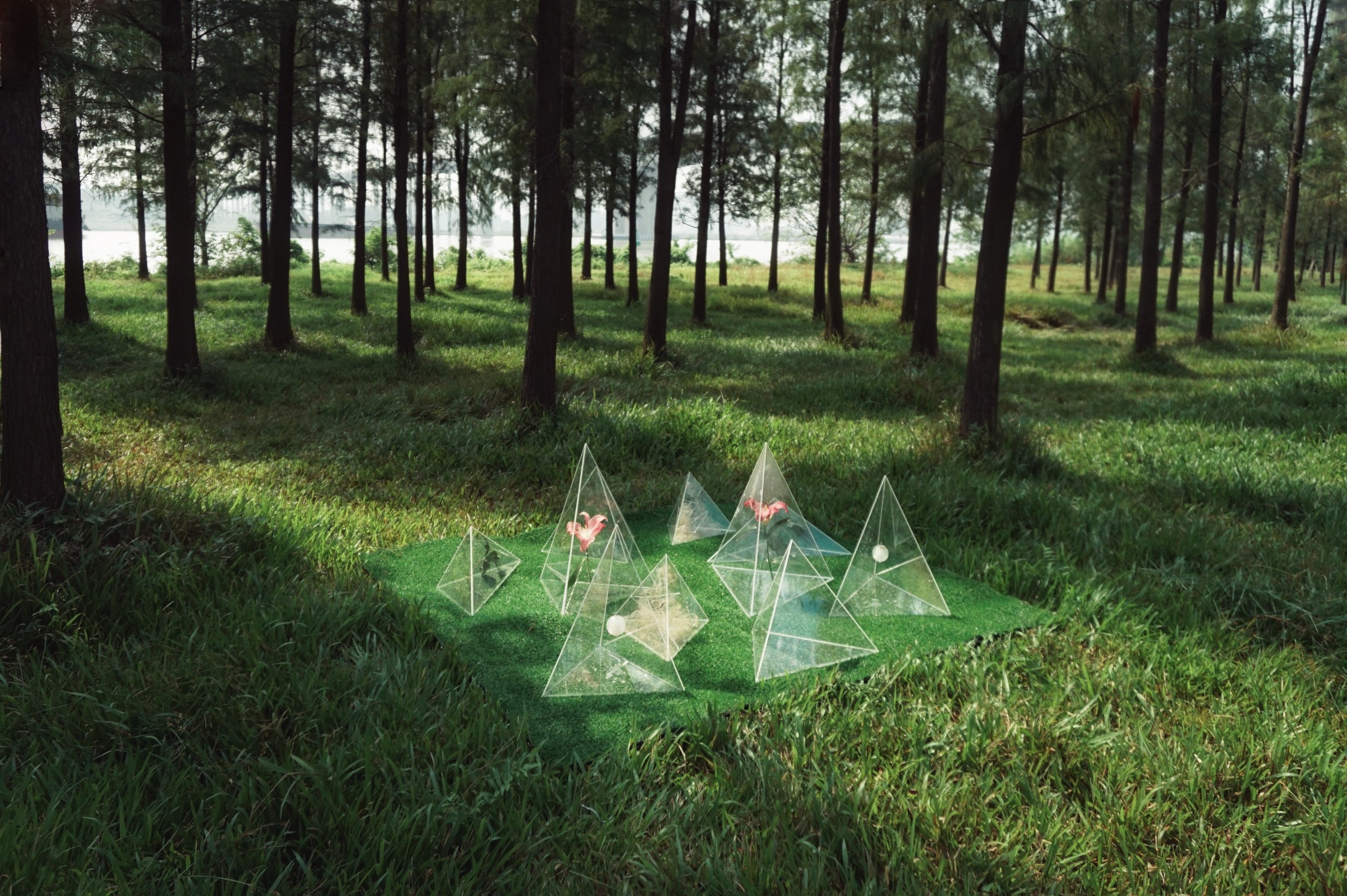
In and Out
Acrylic plasitc, artificial turf, water, butterfly, lily, pupa, hay leaf, 200 × 200 × 60cm, 2019
This is a continuation of the thinking about the " life " of a butterfly. I selected four elements: water, flower, leaf and coccon. The first three elements are essential for the survival of the butterfly, and the cocoon is one of the most important porcess in the butterfly’s short life, which is more realistic than " light ". With the pyramid as the reference, the elements are presented separately, as if the important things for the owner are placed. The sharp corner pointing to the sky also implies the sun’s illumination. The difference, however, is that the butterflies and plants in these pyramids are alive, not dead bodies or inanimate objects. They use bright colors and flying posture to indicate the strength needed for survival.
